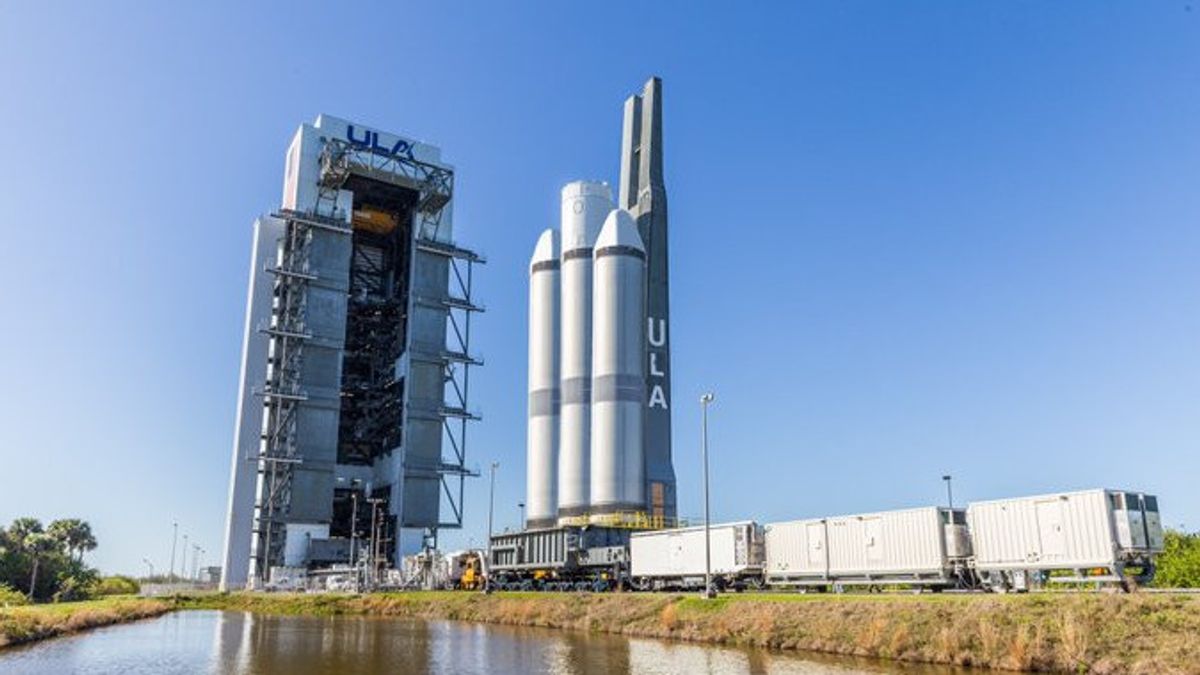JAKARTA United Launch Alliance (ULA), a joint venture between Boeing and Lockheed Martin, plans to upgrade theirition rocket version to challenge SpaceX's Starship in the low-Earth orbit (LEO) satellite launch market.
ULA CEO Tory Bruno said the company wanted to develop academic model adapted to the increasingly profitable LEO market, especially as SpaceX launched thousands of satellites for Starlink internet services.
"We've recently completed a major study of what we need to compete in the future LEO market," Bruno said on Thursday, December 12 on the sidelines of a military space conference in Orlando. "And we've chosen modifications to the mitigation that gave a larger mass to LEO and put us in a competitive range."
The ULA Roket, powered by Jeff Bezos' Blue Origin engine, has carried out the first two launches this year and is designed primarily to meet Pentagon's requests for missions into various orbits.
Among the options ULA considers for an optimized version for LEO, Bruno mentions "Vulcan Heavy" or three jointly tied core boosters. He also said there was another "unique enough configuation of mitigation, which has propulsion in unusual places."
SEE ALSO:
Although SpaceX's Starship is primarily designed for manned missions to the moon and Mars, the company plans to use it to accelerate the deployment of many Starlink satellites into low-earth orbit. This has put pressure on SpaceX competitors to match Starship's capabilities while other companies like Amazon are racing to build competing satellite networks, thereby increasing demand for large launchers.
ULA hopes to complete the development of this variant by the time Elon Musk's Starship the giant rocket that was eventually designed to go to Mars has begun offering the launch of the LEO satellite, which Bruno estimates could occur in the next few years.
"We will not be facing him in that dedicated market for a while," Bruno predicts. Musk said he wanted to double the Starship power and improve the rocket's ability to return to landing in giant mechanical arms, suggesting SpaceX still needed between months and more than a year to launch the Starlink LEO satellite.
The ULA has several mitigating missions ordered by Amazon to send their Kuiper internet satellite into space, making this rocket an important part of Amazon's strategy to challenge Starlink. Amazon has also ordered launches with other rockets as part of a multi-launch agreement in 2022 that sets a record.
SpaceX has launched six Starship flight tests into space from its Starbase rocket campus in southern Texas, featuring their dramatic test-to-failing ethos by involving a gradual increase in sequential and milestone testing before locking down commercial designs. Other companies, including ULA, will not launch new rockets until the design is final.
ULA is targeting to fly eight forward year forward missions and 12 missions with Atlas V, the predecessor of the soon-to-retire minimum. The engines start with a launch price of around $110 million slightly higher than the base price of SpaceX Falcon 9 and have orders of about 70 missions including Amazon missions, adding to the urgency to make these rockets fly regularly.
ULA, formed in the merger of Boeing and Lockheed space launch programs in 2006, has been on sale for more than a year, attracting interest from Bezos' Sierra Nevada Corp, Sierra Space, and Blue Origin space units. Bruno declined to comment on acquisition talks.
The English, Chinese, Japanese, Arabic, and French versions are automatically generated by the AI. So there may still be inaccuracies in translating, please always see Indonesian as our main language. (system supported by DigitalSiber.id)













